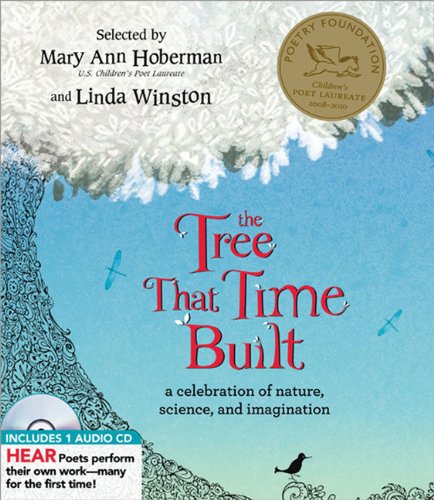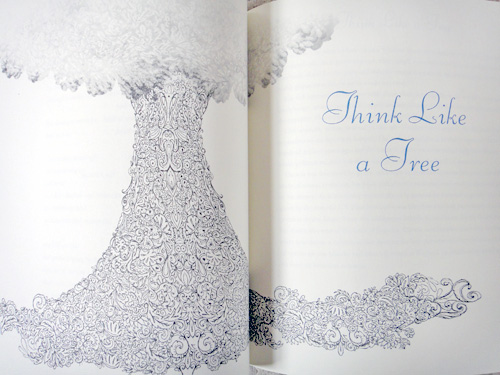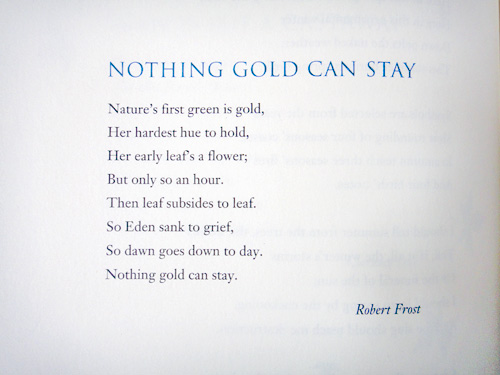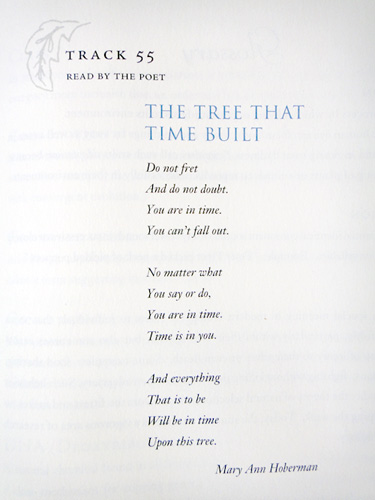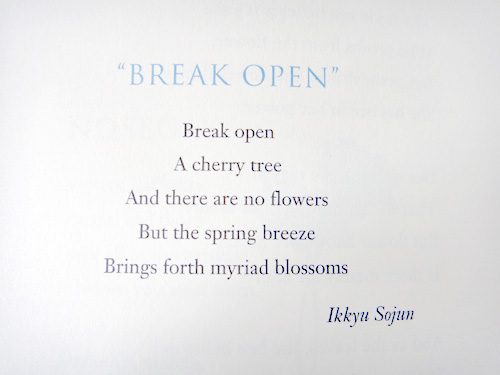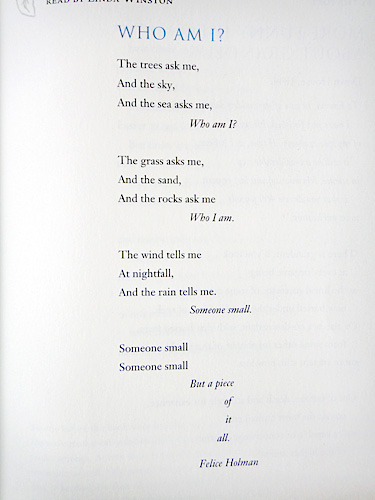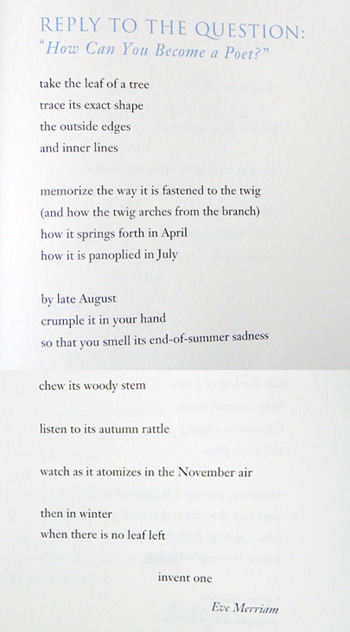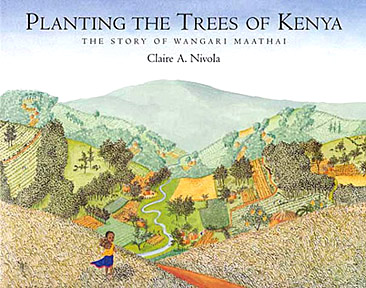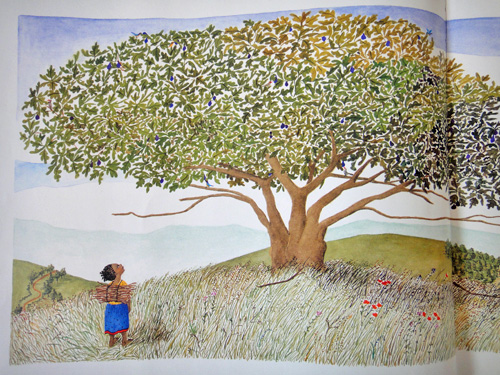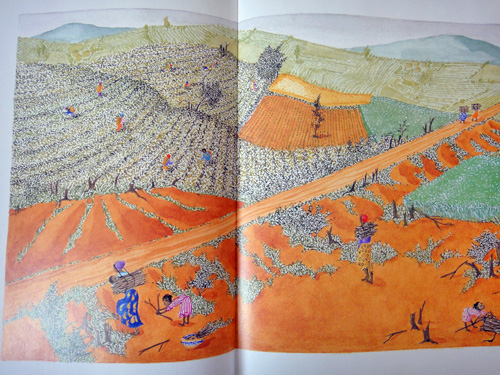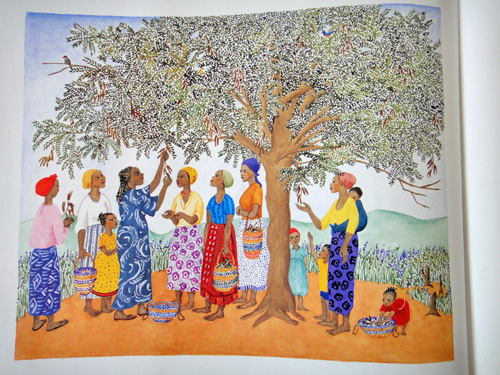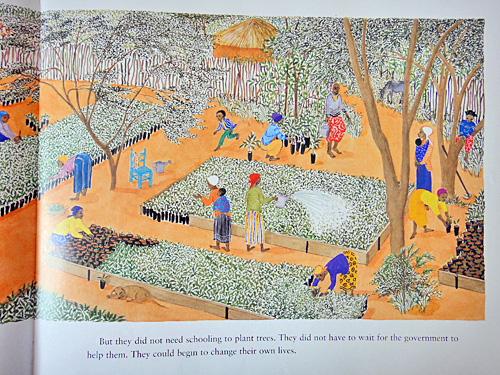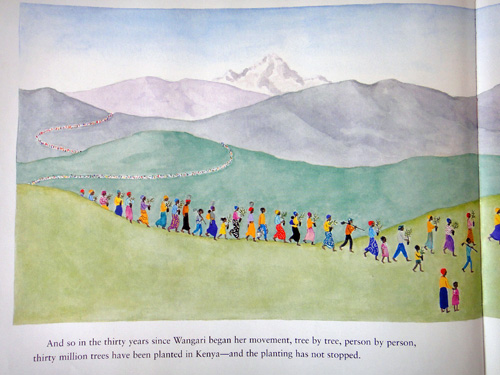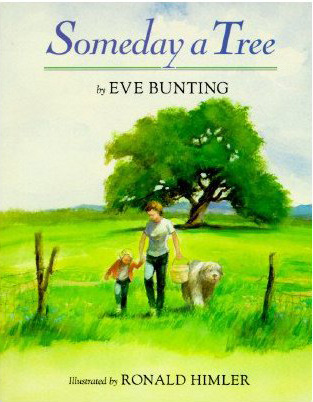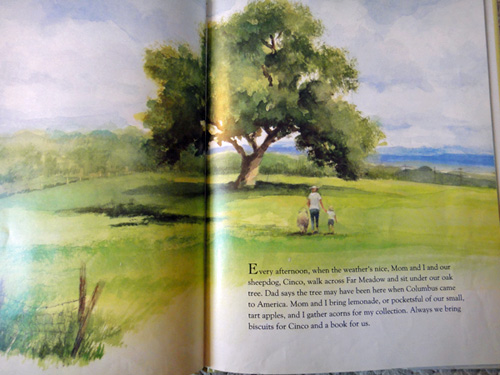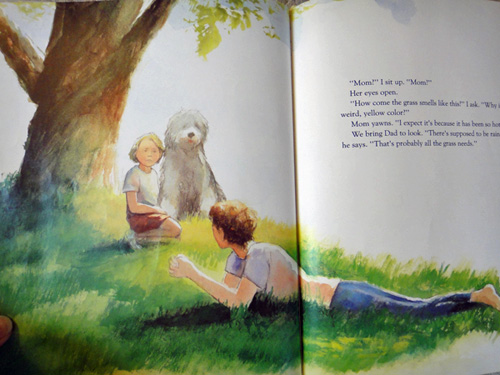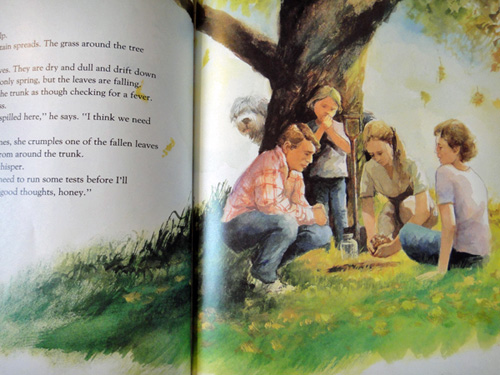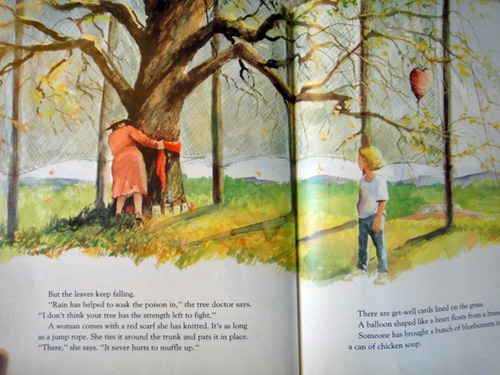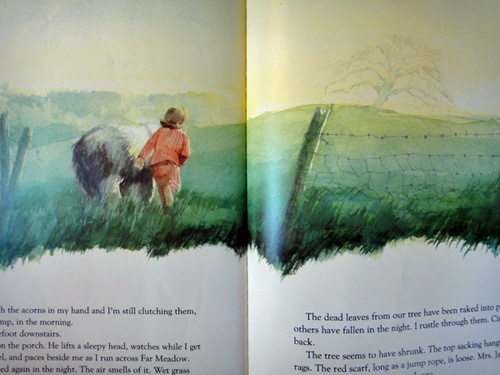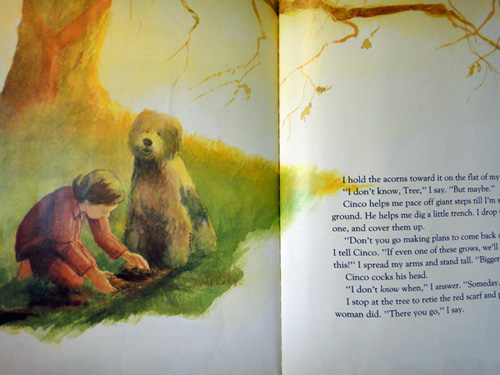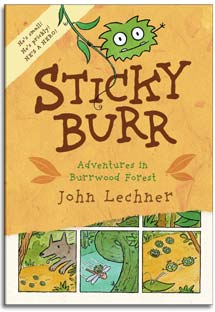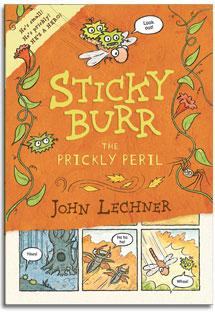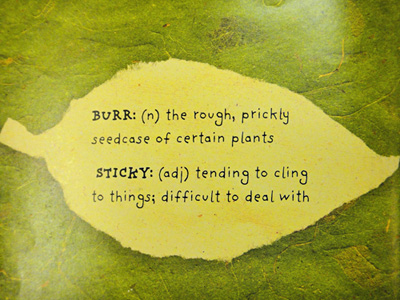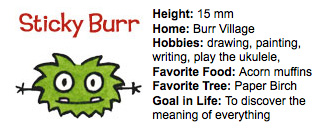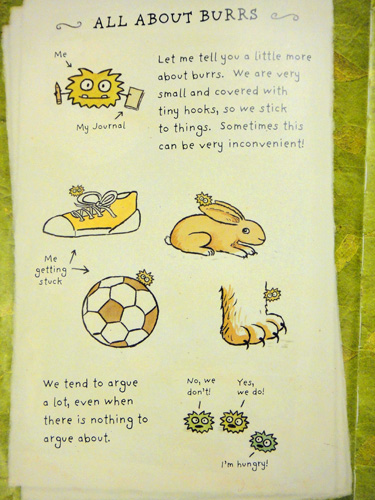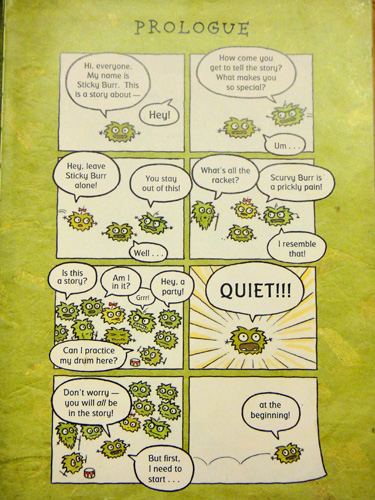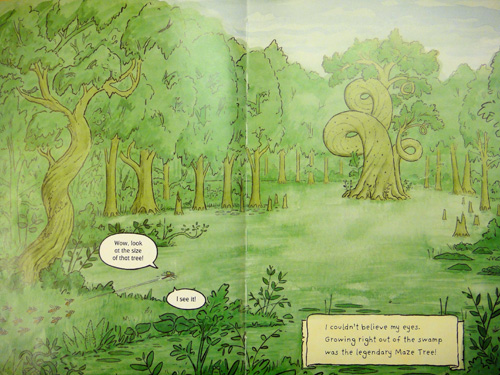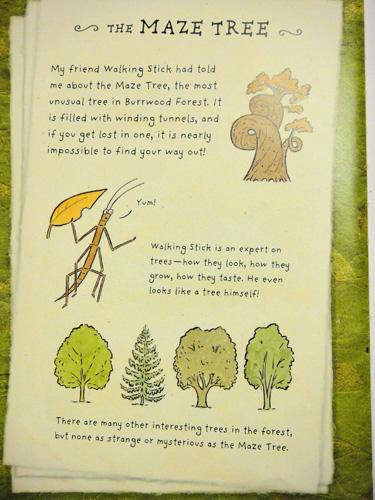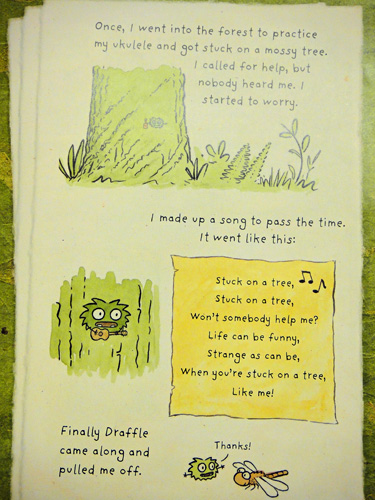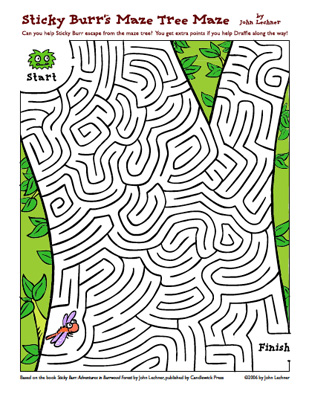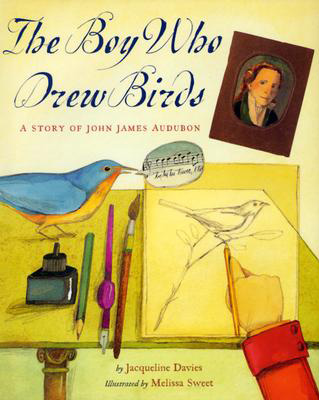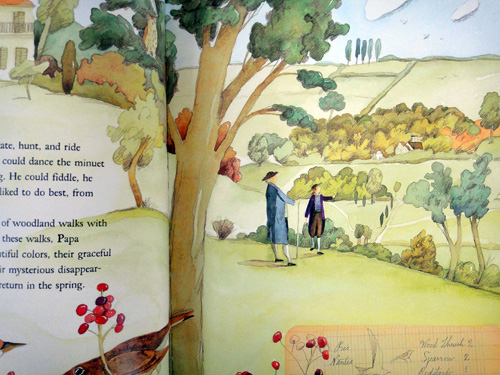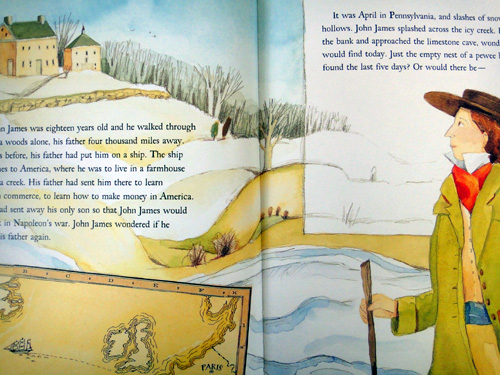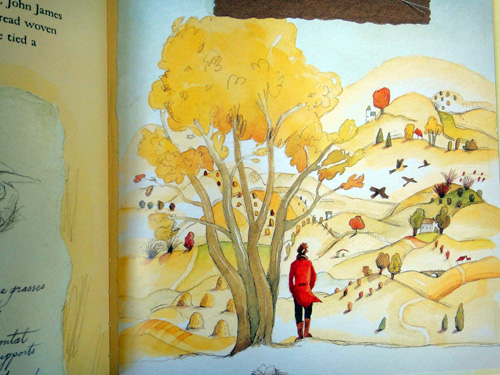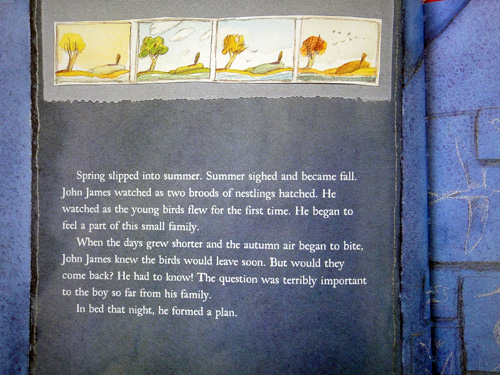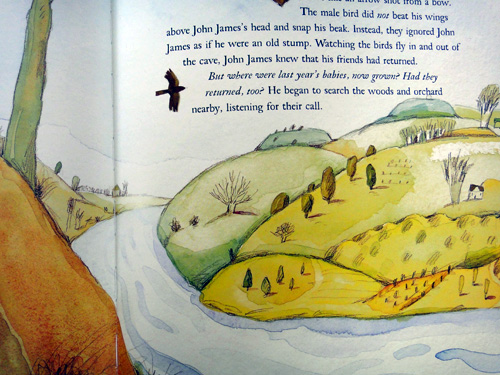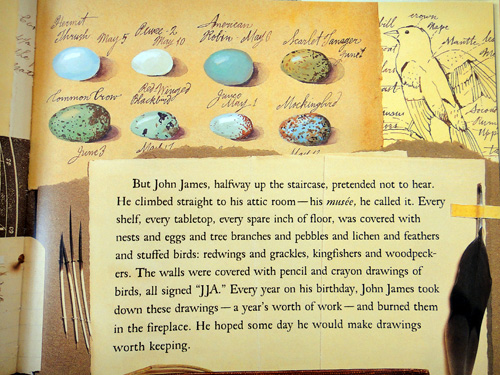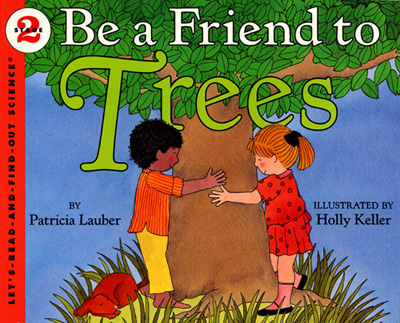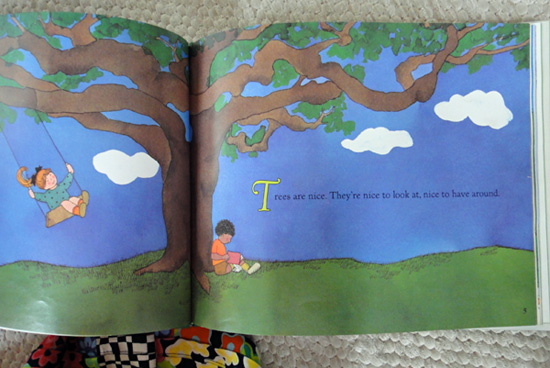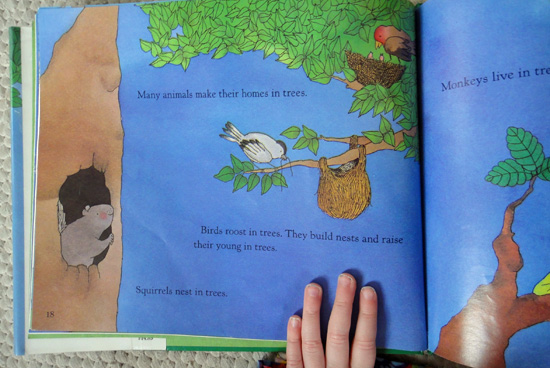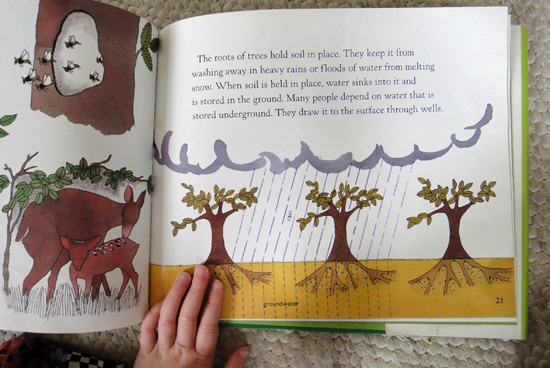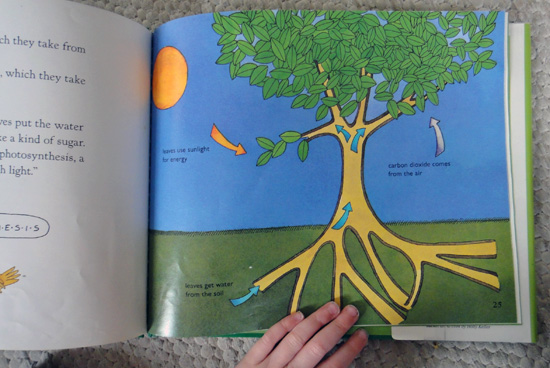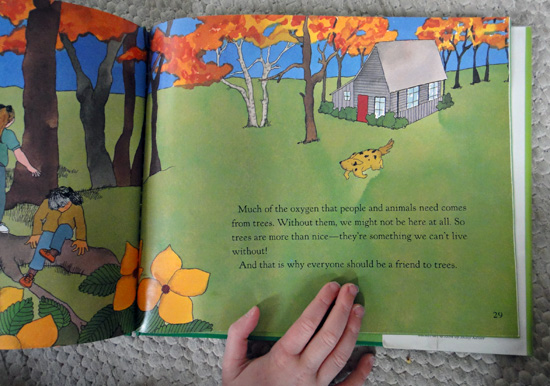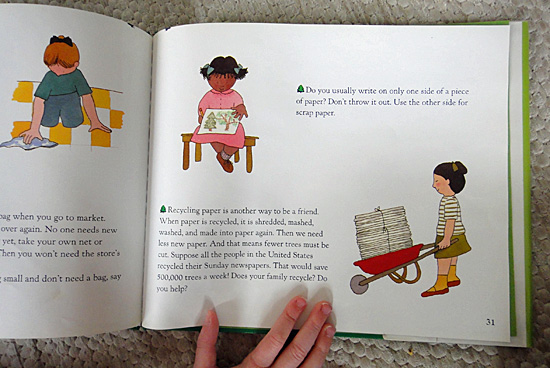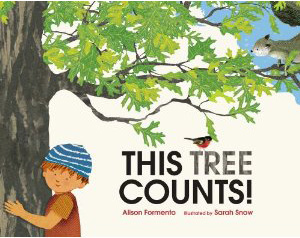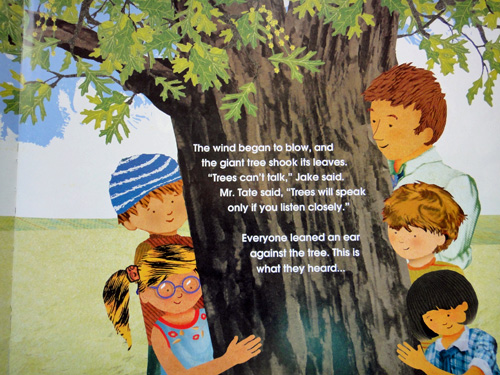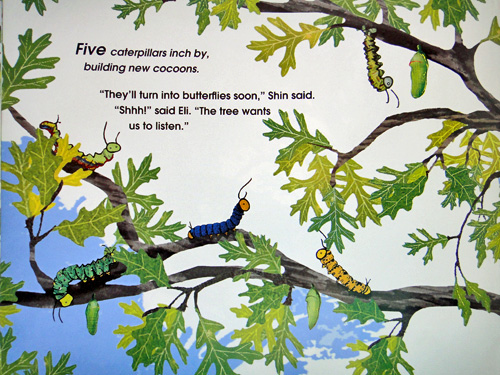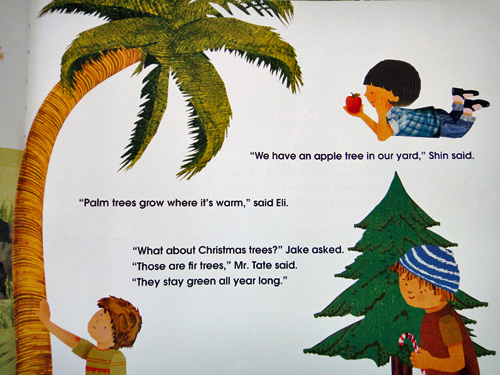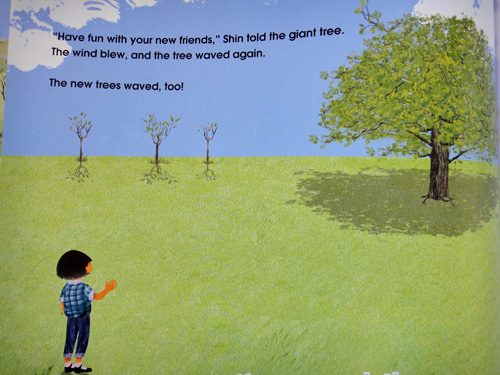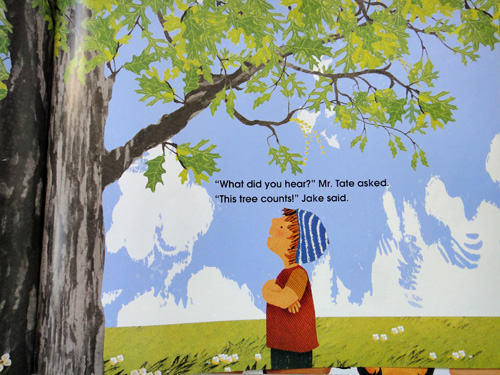Story time. Today's story, The Tree by Karen Gray Ruelle, is about an old elm tree much like the Olmsted elm we said goodbye to this week. This tree is over 250 years old and still stands in New York City's Madison Square Park. This is its story.
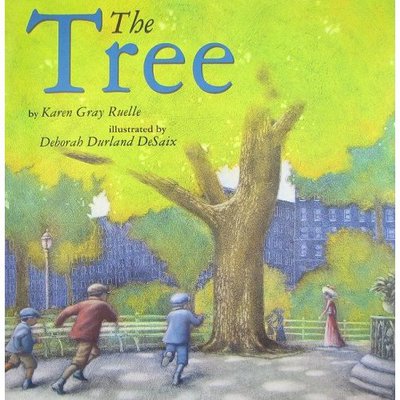
The story begins in 1756 as a tiny seedpod begins to sprout in public ground in New York City near a post tavern on the road to Boston.
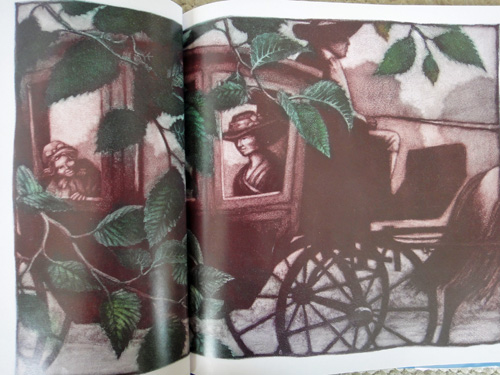
In addition to the beautiful illustrations, the book contains a tree time line on each page in the form of an ever-growing root coming from an ever-growing tree. Here we see the tree in the late 1700s just beginning its long life and long roots.
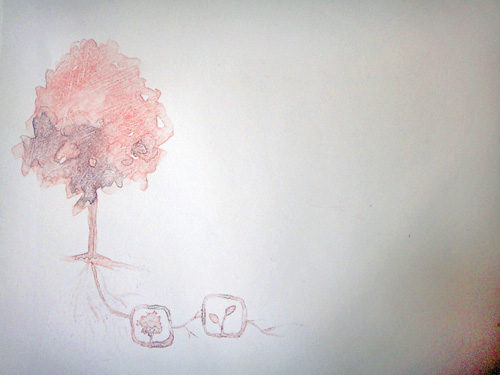
By 1814, the area had become a parade ground and was named Madison Square in honor of then president James Madison. Here a soldier leans against the tree as he speaks with passing children.
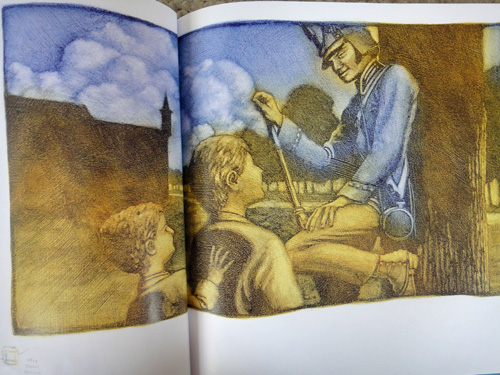
It wasn't until 1847 that the grounds became a city park. Twenty years later, the park would be home to the torch of the Statue of Liberty in a fund-raising effort to pay for the rest of the statue. For fifty cents, visitors could climb up onto the balcony. (They could climb the tree for free.)
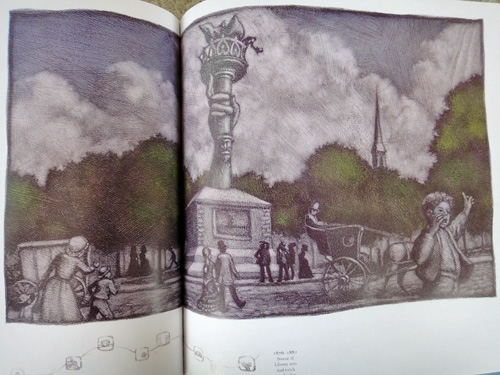
The tree time line shows how large the tree had become by the mid 19th century and how many changes it had seen already.
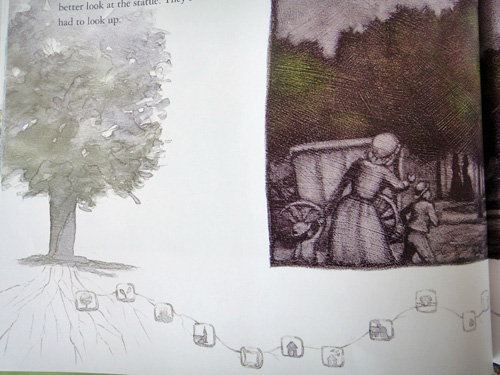
Around the same time, Grand Central Station was built, moving train traffic away from Madison Square. The train depot became home to P.T. Barnum's Hippodrome and eventually the first Madison Square Garden.
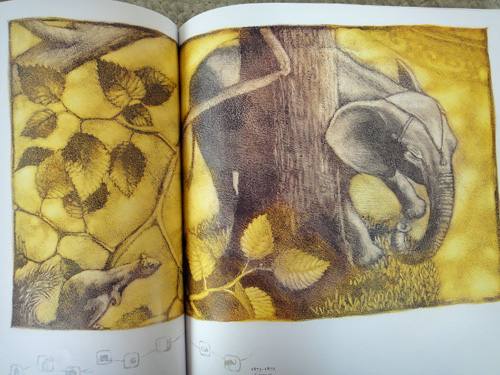
At the beginning of the 20th century, the city began to grow around the park. The famous Flat Iron building was built. The park became a site for political demonstrations and the tree a meeting place.
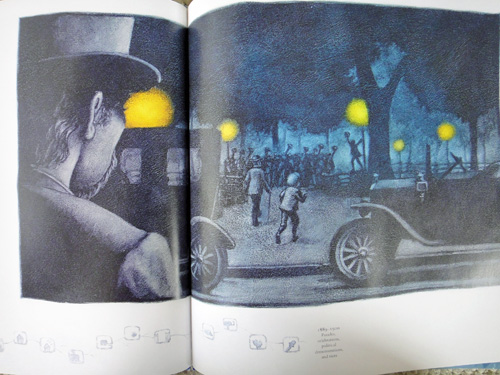
The 1930s brought Dutch elm disease and "the elm, once a common tree, became quite rare." But this tree survived. The park around it however, fell into disrepair until it was restored at the end of the 20th century to the beautiful and vibrant park it is today.
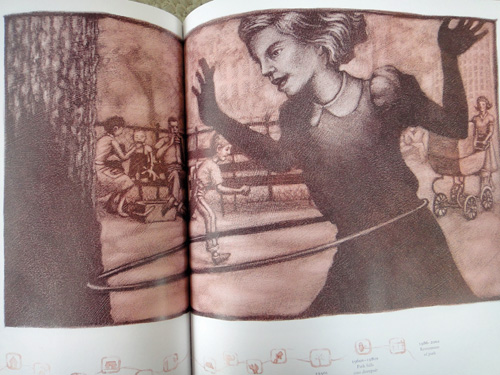
In 1997, the park celebrated its 150th anniversary. The tree was 240 years old.
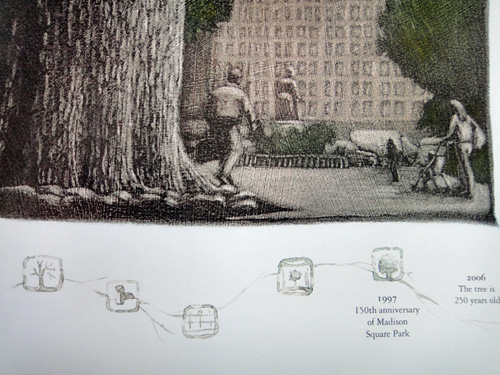
And although the dying limbs of the old tree have been removed, the trunk still stands. (It's by the Shake Shack, if you're planning a trip!)
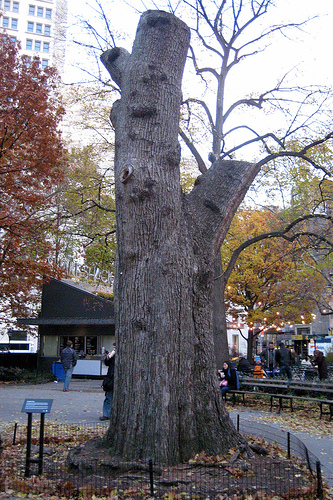
For more info on the history of Madison Square Park and some of the magnificent trees in it, check out this recent article and the Madison Square Park website.
One more interesting fact: The current design of the park was based on a redesign done around 1870 by William Grant and Ignatz Pilat, who assisted Frederick Law Olmsted in the design of New York's Central Park.

The story begins in 1756 as a tiny seedpod begins to sprout in public ground in New York City near a post tavern on the road to Boston.

In addition to the beautiful illustrations, the book contains a tree time line on each page in the form of an ever-growing root coming from an ever-growing tree. Here we see the tree in the late 1700s just beginning its long life and long roots.

By 1814, the area had become a parade ground and was named Madison Square in honor of then president James Madison. Here a soldier leans against the tree as he speaks with passing children.

It wasn't until 1847 that the grounds became a city park. Twenty years later, the park would be home to the torch of the Statue of Liberty in a fund-raising effort to pay for the rest of the statue. For fifty cents, visitors could climb up onto the balcony. (They could climb the tree for free.)

The tree time line shows how large the tree had become by the mid 19th century and how many changes it had seen already.

Around the same time, Grand Central Station was built, moving train traffic away from Madison Square. The train depot became home to P.T. Barnum's Hippodrome and eventually the first Madison Square Garden.

At the beginning of the 20th century, the city began to grow around the park. The famous Flat Iron building was built. The park became a site for political demonstrations and the tree a meeting place.

The 1930s brought Dutch elm disease and "the elm, once a common tree, became quite rare." But this tree survived. The park around it however, fell into disrepair until it was restored at the end of the 20th century to the beautiful and vibrant park it is today.

In 1997, the park celebrated its 150th anniversary. The tree was 240 years old.

And although the dying limbs of the old tree have been removed, the trunk still stands. (It's by the Shake Shack, if you're planning a trip!)

For more info on the history of Madison Square Park and some of the magnificent trees in it, check out this recent article and the Madison Square Park website.
One more interesting fact: The current design of the park was based on a redesign done around 1870 by William Grant and Ignatz Pilat, who assisted Frederick Law Olmsted in the design of New York's Central Park.
